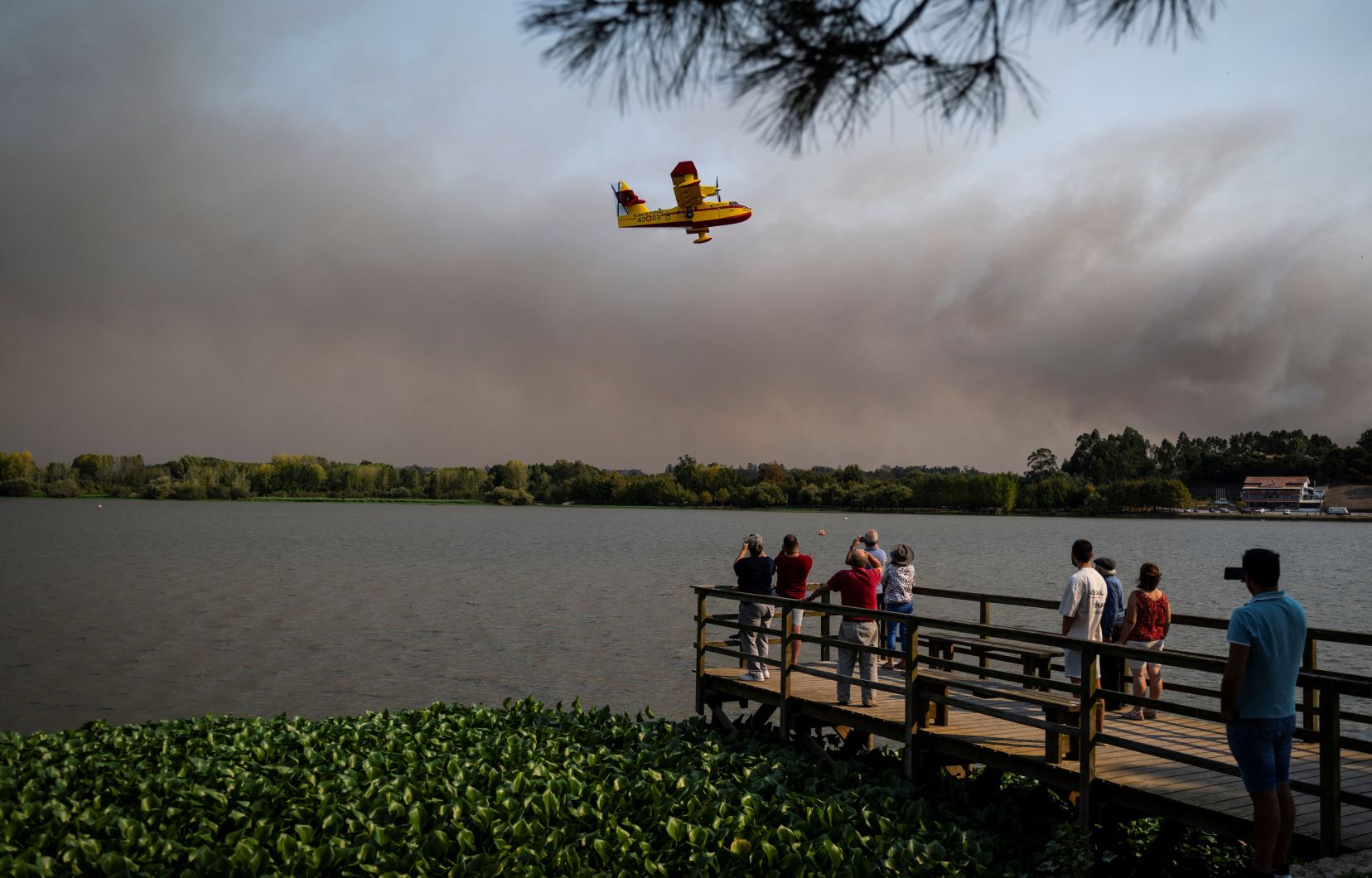Thousands of firefighters were deployed in Portugal on Tuesday to put out forest fires that have killed at least three people and ravaged an area in three days that was larger than the rest of the summer.
Fanned by stifling heat and violent winds, the three largest fires, concentrated in the Aveiro region (north), had already burned some 10,000 hectares by Monday evening, as much as the area that had burned during the rest of the summer, according to a report from civil protection.
Across the country, around fifty active fires are mobilising more than 3,700 firefighters, more than a thousand vehicles and around twenty planes or helicopters on Tuesday.
The “alert situation”, in effect since Saturday afternoon due to a risk of fire deemed “maximum” in a large part of the country, has been extended until Thursday evening.
“We are going to experience very difficult times in the coming days,” warned Prime Minister Luis Montenegro on Monday evening, cancelling all his engagements for Tuesday.
The Lisbon authorities have activated the European Civil Protection Mechanism to obtain eight additional water bomber planes. After the two Canadairs that arrived from Spain the day before, planes made available by France, Italy and Greece are expected during the day.
Visible from the municipality of Agueda, in the district of Aveiro, the Spanish aircraft resumed service on Tuesday morning. Making rotations approximately every half hour, they were refueling in the Pateiro de Fermentelos lagoon, AFP journalists noted.
Road axes cut
A cloud of black smoke rose from one of the banks of the body of water, spreading its harsh odor into the surrounding air.
In the municipality of Albergaria-a-Velha, a 28-year-old Brazilian employed by a forestry company died of burns, trapped by the flames while trying to retrieve tools.
Another person suffered a heart attack on Monday and, the day before, a volunteer firefighter who was fighting a fire near Oliveira de Azeméis, in the Aveiro region, died of a sudden illness during a meal break.
This series of forest fires, which had been raging since the weekend before getting worse on Monday, also left at least forty people injured, including 33 firefighters, according to the latest figures from the authorities.
Several roads are still closed in the districts of Aveiro, Viseu, Vila Real, Braga and Porto, in the north of the country, as well as in the region of Coimbra (centre).
According to experts interviewed by the weekly EspressoMonday brought the worst fire risk weather conditions since 2001 in the northern half of the country.
Memory of 2017
This resulted in some 160 fires breaking out, a dozen of which subsequently grew to significant proportions, making it very difficult to fight the flames.
“We arrived in September with brushwood as dry as straw and, with these weather conditions, any negligence has a high probability of generating a large fire,” explained José Miguel Cardoso Pereira, researcher at the Forestry Studies Center of the Higher Institute of Agronomy of the University of Lisbon.
Portugal had so far had a relatively quiet summer on the fire front, with 10,300 hectares burned by the end of August, a third of that of 2023 and seven times less than the average of the last 10 years.
But the last few days have revived memories of the deadly fires of June and October 2017, which left more than a hundred people dead.
Since then, the Iberian country has increased its investment in prevention tenfold and doubled its budget for fighting forest fires.
Experts believe that the increase in heat waves, as well as their increasing duration and intensity, are consequences of climate change.
The Iberian Peninsula is being hit hard by this global warming, while the heat waves and droughts it causes are fuelling forest fires.
